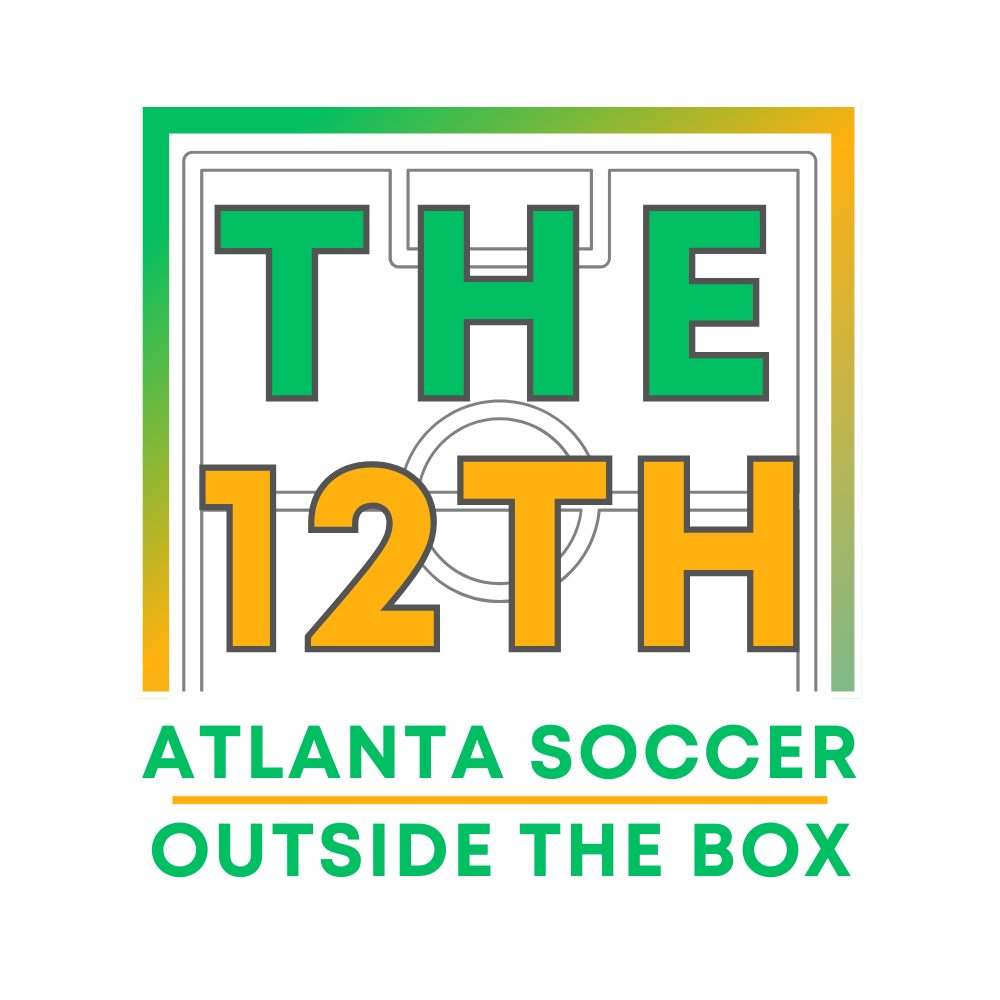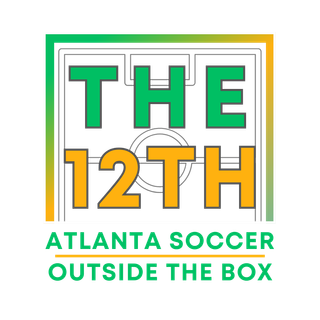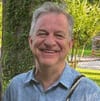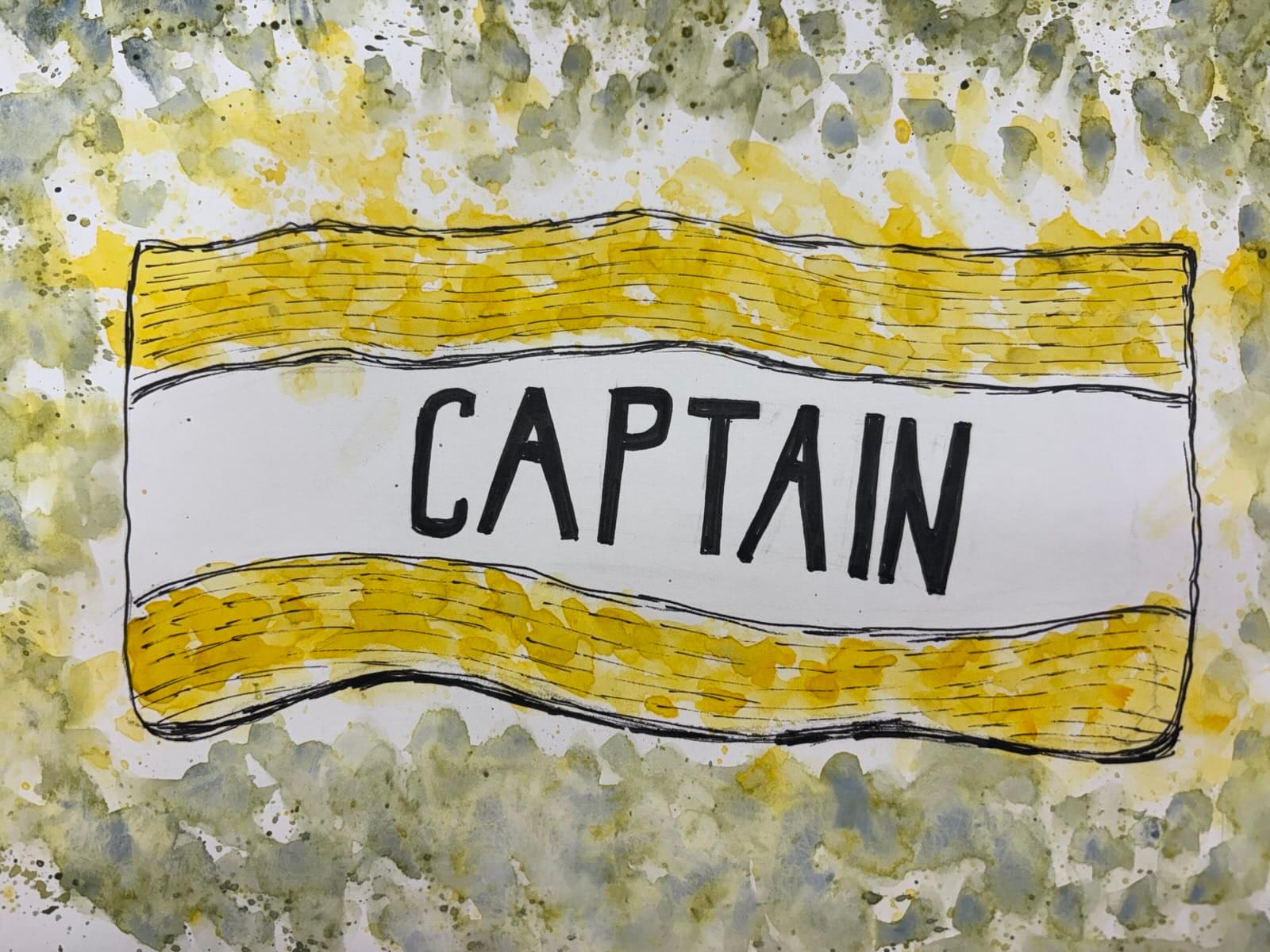It didn’t come until the 71st minute, and didn’t amount to anything. It didn’t happen again.
But for a brief moment during Inter Miami’s dreadful 4-0 loss to PSG on June 29 in the Club World Cup knockout round match held in Atlanta, I was transported to another time and place, which, like this one, I shared watching from the stands with my son, Dylan.
That memory then transported me in my mind on our entire fútbol journey together, which lasted more than a decade, during what was only a few seconds.
Jordi Alba took the ball out of the left corner of Inter Miami’s half, passed it cleanly to Sergio Busquets positioned at the 6 as always, who then casually but precisely moved the ball up the pitch to a rampaging Messi.
Las Vegas to Barcelona
On May 24, 2013, making a jet-lagged first stop as tourists, Dylan and I walked through the tunnel that leads players every match from the locker room to the pitch at the ovaloid temple to world soccer known as Camp Nou. We had arrived just the day before, on a trip months in the planning, organized around Dylan’s trials for two clubs in the youth league of Catalunya, the Spanish region that includes Barcelona. Not being a game day, the stadium was oddly silent, but overwhelming in its size and perfection.
We got up to the edge of the vast field of green, and stared into the expanse. “Mes que un club,” the yellow letters painted on the seats across the pitch brightly reminded us in Catalán. “More than a club,” is the motto. “The best-kept grass in world football,” replaced every year, a staffer told us.
There it was: the place we had only seen on TV back home in Las Vegas, right in front of us.
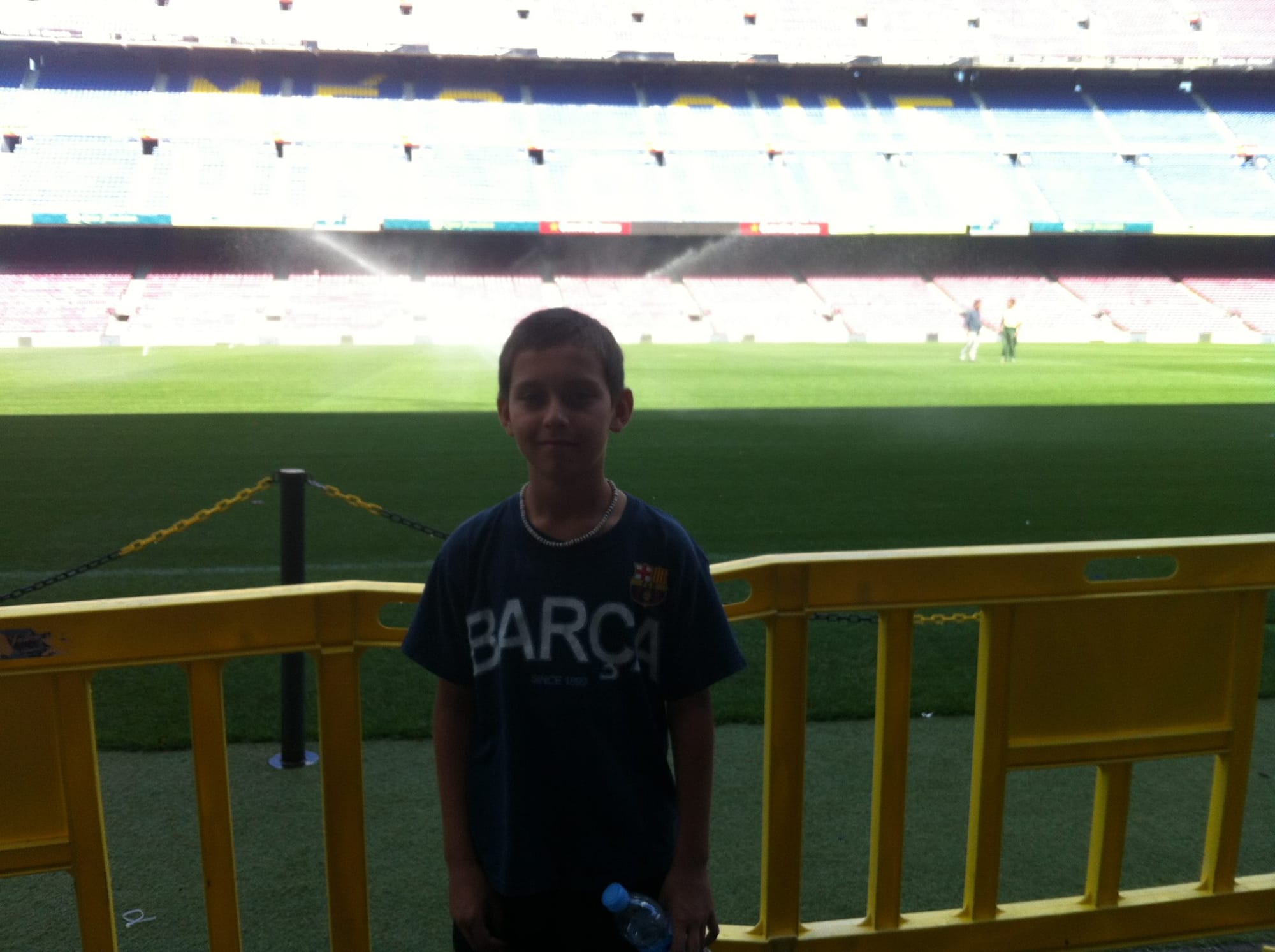
We would see it again a week later, this time from the stands, with Barca playing Malaga, on June 1.
The way memory can fail you, it wasn’t clear to me in June of this year, at Atlanta’s Mercedes Benz stadium, if Messi had played that day in Camp Nou. I looked it up; turns out he didn’t, out with a left thigh injury. But my few seconds of time travel in the Benz weren’t literal. It was just seeing Alba to Busquets to Messi – as if, with blurred vision, it was 2013 again, and my son and I were back in Barcelona.
Cali to Las Vegas
Our family – my wife, Joana; my daughter Jesse, then four years old; Dylan, seven months from being born and I – left Cali, Colombia in April, 2001. The decision to start a new life in the U.S. was primarily motivated by the overwhelming sense it would be safer, as Colombia’s internecine, long-running violence at the time included multiple armed groups, bombings, drive-by assassinations and the insidious threat of being kidnapped.
All these things happened in my city, even in my neighborhood. I remember looking out Jesse’s second-floor bedroom window onto the street below, where a drive-by assassination had just occurred. I thought about the phenomenon of “stray bullets.”
I wrote a story for the Associated Press about armed men grabbing children off of schoolbuses and holding them for ransom. We asked the director at Jesse’s pre-K if we should give our information to police stations along the 20-minute van route from our house to her jardín infantil, in case something happened. “Are you kidding? They’re working with the kidnappers!” she replied.
In our escape from all that, we landed in the desert suburb of Henderson, outside Las Vegas, after a family-owned newspaper called the Las Vegas Sun offered me a job as a reporter. A job was required for Joana to obtain a visa to enter the country, even though we had been married for five years when we left.
I remember banal, cotidian details of our new life. I had left the U.S. for Cali in 1993, right before the Clinton era and the dawn of the internet. Coming back, I remember being overwhelmed at the number and variety of iced tea brands for sale at convenience stores on hot desert afternoons. Once we found a used car dealer we could convince to sell us a Toyota Corolla despite neither of us having any credit history in the U.S., I remember being flummoxed by the process of using a punch pad to buy gas, and had to ask someone for help. We didn’t live with these things in Cali.
We decided it was important to build as much Colombian culture into the lives of our children as possible. Fútbol, or soccer, seemed like one way to do that. Jesse had not come out as trans yet – that wouldn’t happen until she was in college in Atlanta, a completely different journey and story. As soon as I could, I registered Jesse in a boys’ youth league.
Starting at about four years old, Dylan would tag along, launching the life of many younger brothers across the rest of the world, following their older siblings to play fútbol. He chased a ball at his feet as far back as I can recall. A coach named Danny Siciliano who wanted to assemble a competitive team of six-year-olds – yes, that was the plan – spotted Dylan playing on the sidelines of Jesse’s practice when he was five.
At home, I played videos for Dylan of Colombia’s great teams of the 1990s, considered contenders for the 1994 World Cup played in the U.S., until an own goal and then an assassin’s bullet ended that era. I pointed out Pibe Valderrama’s play, one of the last classic South American central midfielders, or No. 10. Being on Pacific time, we would wake up early on weekends and watch Barcelona or Arsenal, two clubs that played a beautiful passing game and placed a high value on developing young players, giving them minutes and letting them make mistakes. We also looked for Milan in the era of Ronaldinho. Technically-gifted, smart midfielders.
Within a few years, Dylan was the central midfielder – the conductor – for FC Heat, the same club that had recruited him. They played at tournaments in other states, including San Diego’s Surf Cup, where we passed through a tunnel with photos of previous players in the competition, like Clint Dempsey and other future pros.
We were in awe. I’ll always remember one of the games, against the previous year’s winner, considered one of the best teams in California for that age category. The central midfielder was key to their possession and dominance. Dylan’s coach looked at him in the pre-game talk and said, “You know how you kill a snake? By cutting off its head. That’s your job today, Dylan.” Their number 10 hardly saw the ball the whole game.
Youth Soccer and Pep
Memories returning to me from that time not only lack clarity, in the way memory is fallible; they are also, variously, sweetened with nostalgia or edged with a bit of cringing embarrassment.
Dylan took on the game with passion and not a small amount of skill and intelligence. But there was also a particular intensity surrounding youth soccer at that time, owing in part to the outsized influence of Pep Guardiola’s Barca in the late 2000s and 2010s. In early 2011 – when Dylan was nine – the top three players in the Balon D’or vote, or the world’s three best players, were Messi, Iniesta and Xavi, all formed at La Masía, Barcelona’s youth development program. That had never happened before, and hasn’t since.
In a four-year period, the club under Pep Guardiola won the Champions League twice and La Liga three times, with a now widely-known style of play based on possession that, while bearing impressions of Dutchman Johan Cruyf, was nonetheless innovative. Those results and that style were built at La Masía. Not only Messi, Iniesta, Xavi and Busquets – the pillars of the team’s much-studied possession – were formed there. So was Alba – and Guardiola.
Some of us adults in the U.S. who had young players in our lives with skill and drive got word that the youth league of Catalunya was a bubbling cauldron of inspired, intelligent and technically-gifted players – including, but not limited to Barcelona’s youth teams. The league had a promotion-relegation system, like most competitive leagues outside the U.S. Teams could move up in competitive categories by winning, and vice versa.
A friend’s son had moved to Barcelona in 2012 and gained a spot on a youth team in the city called CE Sant Gabriel. He was three years older than Dylan, who was 11. He got a student visa, lived with a family from Colombia in the city and organized his life around the game.
These sorts of ideas were in the air, at least in some circles – a young player with ambition could try out for a team in Catalunya’s league and move to Barcelona, in pursuit of a future in world football.
Dylan, who has never shown much fear or nervousness around the game, wanted to go for it.
Getting to Spain
Our friend knew a guy in the Spanish city who could arrange trials at two teams in Catalunya’s league, for a fee: Sant Gabriel and L’Hospitalet. I would have to travel with Dylan. The whole thing would be too expensive for us to afford, since I had been laid off from the Las Vegas Sun during the 2009 recession, and was several years into freelancing. Joana was teaching art. We were barely holding on.
But I knew someone who was a regional director at Sonic and he had these coupon cards you could sell for a certain price and keep the money; they were a promotional gimmick the fast-food drive-in used to support local sports and Scout groups and the like. We got ahold of hundreds of them and spent weeks standing outside the place; Dylan would walk up to people waiting in their cars for burgers and shakes and say he was selling coupon cards to support his soccer trials in Spain.

Dylan also received a great deal of emotional support and some donations from a group of African men he had been playing pick-up with for months. Las Vegas was a great place for the kind of unstructured, unsupervised play that contributes so much to the development of most players around the world, since it attracts an international workforce to the casinos – and they bring with them a love of the game.
Even in the desert’s merciless heat, this group of young men from Ghana, Senegal, Nigeria and Ethiopia would play scrimmages on a reduced pitch marked off with t-shirts. The main rule: one touch only. This meant the players had the technical ability to evade their mark, receive and pass the ball – or shoot – without dribbling. The games were fast-paced, at times breathless to watch.
Dylan was the only player who wasn’t African, and at 12, the only child. They sort of adopted him. Some of them had gone on journeys to other countries as teens, in search of a career in football; they both recognized his potential and knew what he was about to go through. They knew that showing belief in him mattered, and told him on and off the field how good he was. A handful of the group came to our house before we left and wished him luck.
I often think of these guys with nostalgia, wishing we were still in each other’s lives somehow, at least with Dylan and them on a pitch somewhere. I also wish we had gotten together after Dylan’s trials, but there was never time.
In four or five months, we raised enough money for the flights, an Air BnB for twelve days, food and, it turned out, tickets to see Barca play. We landed in Barcelona on May 23.
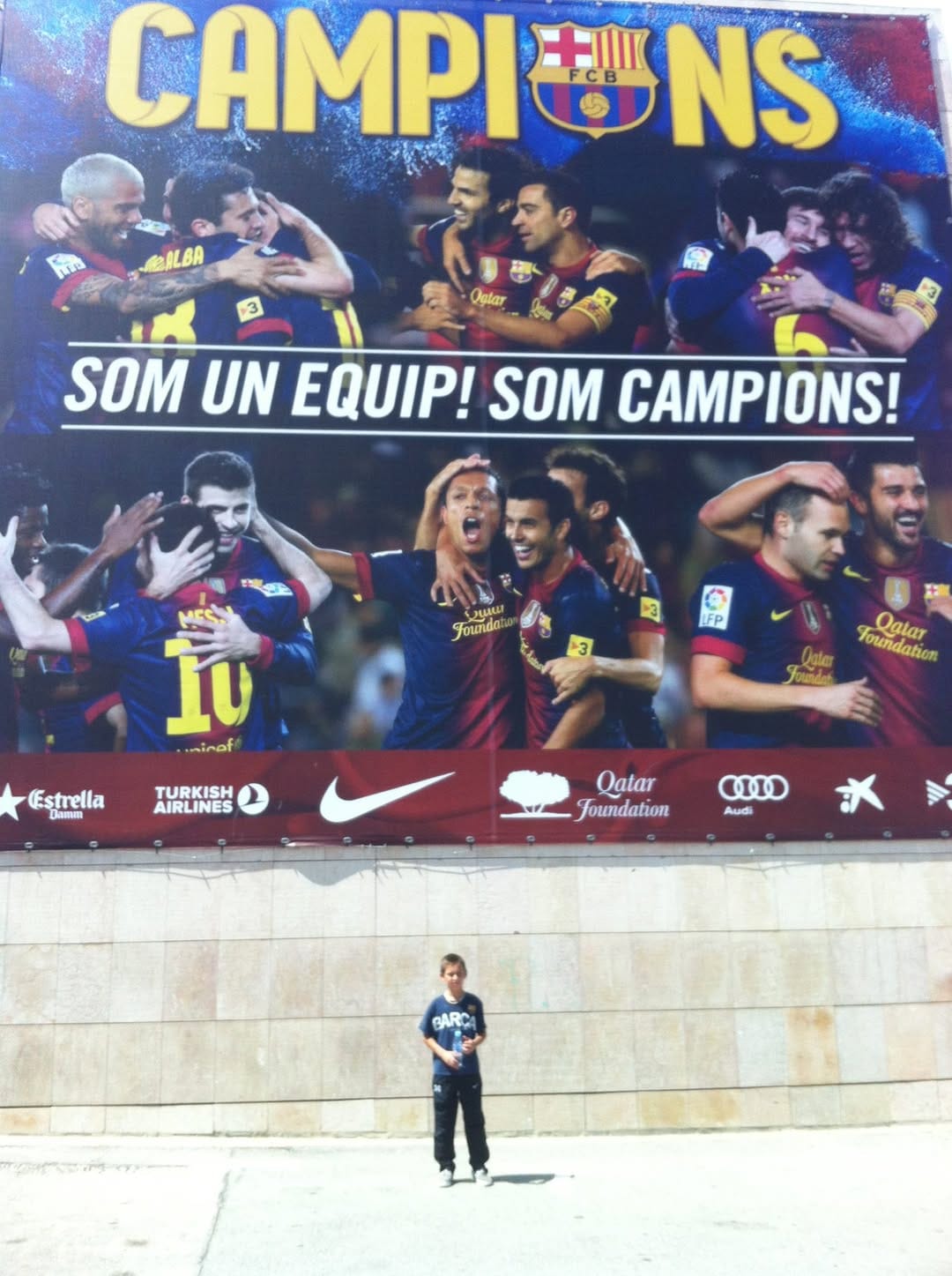
Trials and Tribulations
A few days later, Dylan’s trials at Sant Gabriel began. I remembered being surprised by the youth club’s infrastructure. The club had its own field, stands, lockerrooms, and a restaurant/bar – things you don’t see in U.S. club soccer at the youth level. It was a bit intimidating, but also comforting in its sense of self, with the club’s name everywhere, a trophy case, photos of past players.
There being a locker room meant there was banter, I would find out later. While players were getting dressed to play, they asked Dylan where he was from. They couldn’t believe it when he answered, “Las Vegas.” Nobody’s from Las Vegas. Lots of laughs all around. “No really,” one player said – “Where are you from?” Dylan waited a beat, the locker room quiet, waiting on his reply. “Your mother’s house!” he said.
The place went wild.
That might’ve been the best moment of Dylan’s six days with Sant Gabriel. He didn’t see much of the ball, didn’t leave much of an impression. It was discouraging.
During the day or two between trials, we took a train to Sitges, a small beach town outside Barcelona with narrow streets and an ancient castle turned into a museum. Walking in the sand, Dylan was down, wondering if we had made a mistake in coming. He even suggested we cancel the second trial we had scheduled, with L’Hospitalet, a club with an adult team as well as youth teams, unlike Sant Gabriel. I tried my best to offer optimism, reminding him the next experience could be completely different.
Inside, though, I also wondered if we had made a huge mistake.
L’Hospitalet’s youth team trained in the adult team’s stadium, which then played in a lower division, below La Liga. Although Sant Gabriel had bleachers alongside its pitch, this was a full-sized stadium. I think I was the only person in the stands, trying to capture as much of the trial, mostly a series of scrimmages, on my i-Phone.
I can only remember how Dylan occupied the center of the pitch, distributing the ball left and right, looking comfortable and loose. He scored the third and tying goal for his side. The coach called him a “crack” when we caught up with him outside the locker room afterward.
“I can't even describe how I feel!” Dylan said to me on the metro ride back to our Air B n B. It was the exact opposite of his previous experience. I was beaming.
The trip also included seeing Picasso’s paintings up close – “I can’t believe he painted these 100 years ago,” Dylan said. He rode a metro and saw the Mediterranean for the first time. We experienced what it’s like to have a whole city follow the same game, as we got on and off the bus during the Champion’s League final and caught up with highlights by sticking our heads in bars and asking for the score.
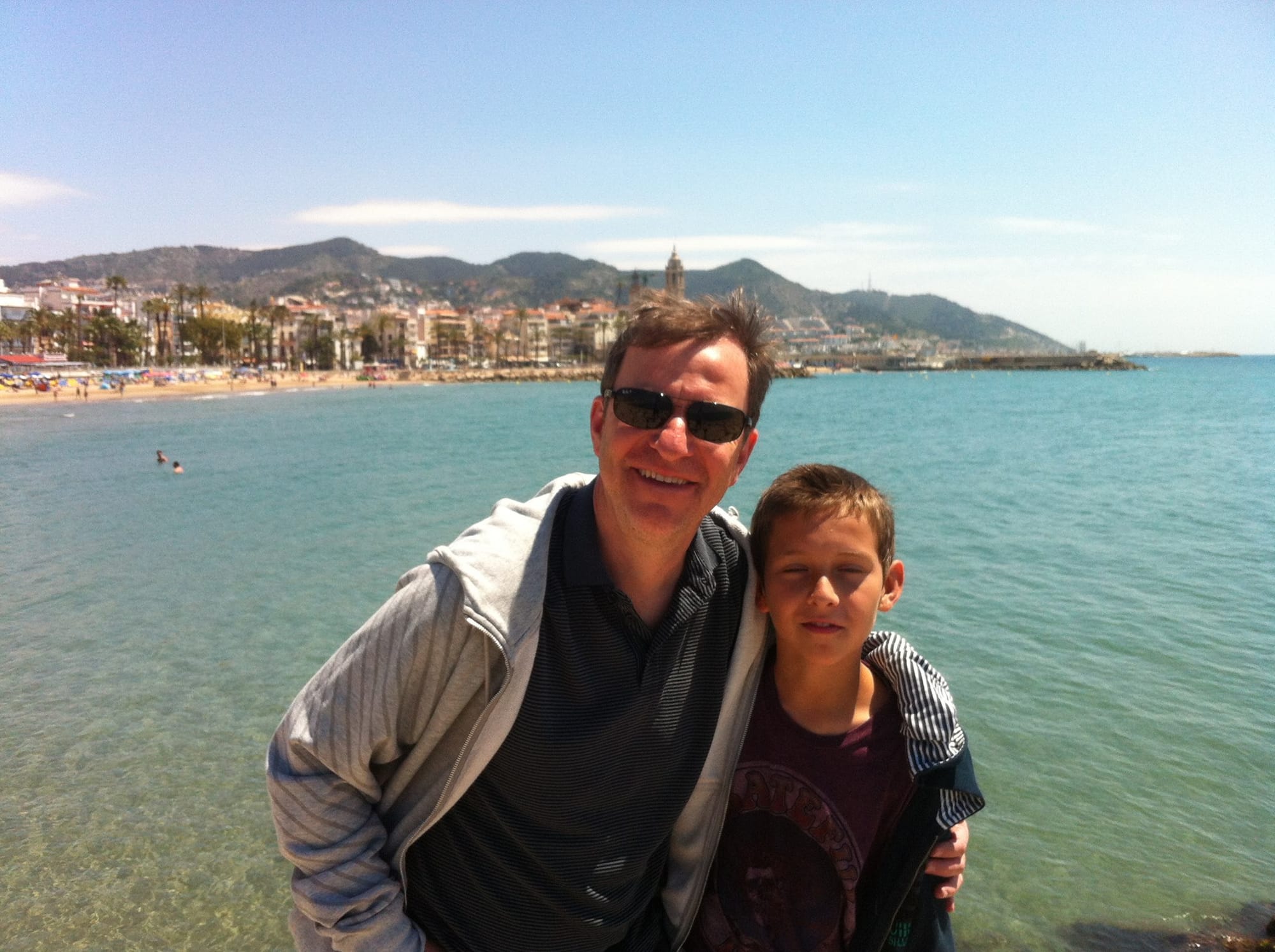
Plus, we saw the Barcelona-Malaga game that started this reverie, which in the moment was noteworthy because it was the last game for French left back Eric Abidal, who had overcome liver cancer only weeks before. It was also the last home game of the season, and a chance for Barca to set a La Liga record with 100 points in a season.
Abidal came on in the 75th. Within a few minutes, with the whole stadium pulling for him, he brought the ball up the left flank nearly the length of the pitch, finishing with a cross that didn’t result in a goal but was emotionally intense for the crowd. Barca won, 4-1.
Although Messi was out with an injury, we got to see Alba and Busquets – as well as Xavi and Iniesta.
Anything Can Happen
When I say there are parts of Dylan’s football journey that are tinged with embarrassment for me, it’s partially because I now know how incredibly difficult the whole proposition was, in a way I didn’t at the time – not only because trying to break into the top leagues of Europe or South America means you’re literally competing with young players from the entire planet, but also because…anything can happen along the way, things completely outside your control.
At the time of our trip to Barcelona, our family was about to uproot our lives and move across the country, from Henderson, Nevada to Dacula, Georgia, a town in Gwinnett County. I had been laid off from the Las Vegas Sun several weeks before Christmas, 2009. We went through a drawn-out bankruptcy and stayed in our house for as long as we could while I wrote and then had an agent shop around a book proposal based on a New York Times Sunday magazine story I had written about the outsized ambitions of Tony Hsieh, CEO of Las Vegas-based company Zappos. (He later died tragically, and mysteriously, in a house fire.)
With our house facing foreclosure, the idea was we’d find someplace else to live in the area if the book proposal sold. It didn’t. We decided to move to Gwinnett, where our extended, Colombian-American family had already begun putting down roots, becoming part of the contemporary history of the southeast’s most diverse county.
The four of us lived in the basement of a niece’s suburban house for six months, before finding a house to rent in the same neighborhood. Moving the entire family, a truck stuffed with most of our things also crossing the country, was not easy. Each of us left behind memories, relationships, a house both children had spent growing-up years living in. We told several friends to take whatever we left behind. Years later, one of them found my talisman, an old Associated Press photo ID from Colombia, in a box he had grabbed from our garage. “Prensa Internacional,” it says, above a photo of my angular, thinner face. He sent it to me in the mail. It’s now back in my wallet.
Meanwhile, I was on the phone with the coach of L’Hospitalet, who not only continued praising Dylan, but offered the option of living with his mother, a retired schoolteacher, if we decided to let him move to Barcelona. It was all great to hear, but confusing at the same time. There was so much to get used to in our new life, starting with living in another family’s house, us being a family of four.
Everything felt uncertain. If the idea was that Dylan would go to Barcelona alone, how could we afford to pay for his expenses? We were living off of what little was left from the 401k I had at the Las Vegas Sun – the last retirement fund I’ve had, more than a decade later.

Or, would I move with Dylan, based on having found a job beforehand? I tried locating leads, while also working on pitching freelance stories to help sustain the four of us.
Still, we didn't have time to linger before the school year began. We enrolled Dylan in the nearby suburban middle school. Amazingly, our niece’s neighborhood was built right next to a huge park with dozens of soccer pitches belonging to a local club. The fields were only open when the club’s teams played, but we would cross the street, walk behind the neighbor’s house through a small thicket of trees, up a small slope, and sneak through or over a fence to train.
Then, something completely outside our control happened. Several months before Dylan’s trials, FIFA had begun investigating Barcelona for its handling of what wound up being more than 30 minor players from other countries, accusing them of violating the international football association’s rules. The investigation dragged on for months, and FIFA wound up fining the team and prohibiting them from signing players for two transfer windows.
But the whole affair had ripple effects. The regional league in Catalunya where Barca’s – and L’Hospitalet’s – youth teams played decided to prohibit foreign players from competing. They could train, but not compete. The decision affected thousands of minors from around the world whose families had gone through variations of our decision-making process, and were already playing in the league – including our friend’s son.
The entire idea of Dylan moving to Spain to develop as a player crumbled to bits. Dylan had actually begun speaking in favor of waiting to make such a big move, arguing that he needed to grow a bit more. Dylan is now taller than my 5’9” and with the typical soccer player’s athletic build, but back then he was often the smallest on the pitch.
We were all still overwhelmed with starting over, having agreed to rent our own place within six months, which would require having money in the bank for a deposit. Jesse and Dylan were adjusting to new schools, living with and around extended family, even changes in weather, now out of the desert and into the southeast’s four seasons.
Dylan had started his life in Georgia.
A Young Man's Game
One of the many things separating world football, or soccer, from other sports popular in the U.S. is that it’s a young man’s game. Sure, many players extend their professional careers into their 30’s and a few even reach 40, but most are at least aware of whether they have a shot at getting paid to play the game by the time they reach 18 or so.
Even as I write, Arsenal’s Max Dowman has become they youngest player ever in a Champions League game – at 15 years, 308 days old.
Also, there’s the lore surrounding Leonel Messi, the world’s best player, who left his home in Argentina at 13 and moved away from his family to join Barcelona’s La Masía.
So if a young player has drive, and talent, the player’s family has to think about pathways to maximizing that talent and any opportunities that may come from it, starting early.
At the same time, there’s a tension between that reality and the fact of soccer still being a game after all, and, say, a 12-year-old still being a child. As Dylan’s father, I found this consistently difficult to manage, and am sure I botched it over the years more than once. For example, at one point I realized it didn’t make sense to analyze the game he had just played. He needed time to decompress. Better to talk about lunch or anything else.
Nonetheless, on landing in Georgia several months after our trip to Barcelona, I began sorting through the alphabet soup of leagues and divisions in U.S. youth soccer at the time, trying to find a club that would appreciate a smart, technical central midfielder like Dylan, with a coach who would help him improve, in a league competing at a high enough level to help him go as far as he wanted to.
I have no idea what the youth landscape looks like now. But I knew then that the lack of promotion and relegation – as there is in Catalunya, for example – plus the prevailing commercial approach to the sport in this country meant the fact of a youth league being billed as “high level” or anything similar was hard to measure objectively, and “top” competition wasn’t always that good.
I remember there were a couple clubs in Georgia that played in the Development Academy, or DA; this league included youth teams from MLS clubs, so it was supposedly the highest level in U.S. youth soccer at the time.
Dylan tried out for one. After several days of training, we were both surprised to find the club’s emphasis on developing 1v.1 ability, long balls, strength. Not good signs for a player who plays in the middle of the field, receiving and distributing the ball, breaking defensive lines with passes of varying weights and angles, thinking about the sport as a collective endeavor. We had differing approaches to the game.
No Feedback
As if preparing me for what Dylan and I wound up experiencing first-hand, about a year after we arrived in Georgia, during one of a handful of interviews I did for a magazine story, former U.S. Men’s National Team player Eric Wynalda told me, “I don’t think anyone’s clear what they want to do at the youth level [in the U.S.]. The talent and ability of our players now far exceeds the ability of our coaches.”
Wynalda was once the all-time U.S. Men’s leading scorer – and was then an ill-fated coach of the Atlanta Silverbacks, playing in a league called the NASL. He followed and had strong opinions about the game on multiple levels, including the youth system, not least because he had children who played.
In the years that followed, Dylan played for eight or so clubs. One was all-Latino, playing on makeshift turf pitches behind a building housing an indoor pitch and a mango and chile stand. Another trained on manicured, suburban grass pitches in a public park. There were multiple leagues, each with their acronym.
I remember each change of seasons being an anxious time, as we would launch another search for the best combination of league, club, coach and players, driving all across the Atlanta metro area.
Another memory that makes me cringe is of myself, pacing on the sideline as if I was watching an Arsenal game, yelling at the ref or commenting on the game’s disappointments. I never yelled at Dylan, but I’m sure there were times I didn’t make it easier for him to focus, or was just being a jerk. I apologized to him for my sidelines behavior while working on this story.
We would travel together, Dylan and I, maybe talking about upcoming games, or maybe saying nothing, as he rested. Dylan not only didn’t display nervousness around the game, he didn’t show his emotions much in general. We didn’t have deep conversations, but we were together.
Sometimes we’d talk about the friends he’d made at the various clubs. Like him, they were nearly all from families with one or two immigrant parents – Colombia, Peru, Mexico, Argentina, Romania.
Games were played in Alabama, Tennessee, North Carolina, South Carolina, Florida and across Georgia. Sometimes Joana came along; we made time to go to the beach, eat some barbecue.
I still remember a 40-yard goal that took advantage of the goalkeeper stepping off his line a bit too much, at the tournament held at Orlando’s Disney, supposedly one of the best in the country. The last tournament Dylan played, a national championship in a then-new league, was in Denver; he scored a penalty without knowing his big toe was broken on his dominant, right foot, in a game his team lost.
That injury was one of many. Over the years, Dylan tore his meniscus and a ligament in his wrist, split his patella (knee), pulled his groin and his hamstrings. He once stepped on glass and couldn’t play for weeks while it healed.
Several clubs he played at sent him to be seen with other selected players from across the Atlanta metro area at Oglethorpe College’s pitch, where coaches from the US Men’s National Team’s youth system would silently observe scrimmages. This happened twice a year, if memory serves. The coaches never said anything to him.
Coaches in the DA system asked him to play as a guest, including in games against MLS club youth teams. Some asked him to train for awhile. When Atlanta United was about to start up, their youth coach invited him to train for a couple of months. These coaches also said nothing.
One summer, FCB Escola, part of Barcelona’s international program promoting the club’s approach to the game, gave a camp at the Atlanta Silverbacks Park in Dekalb, where Wynalda’s NASL team had played. The coach training Dylan, who was then 13, told me he’d receive a 3 of 5 in their internal system.
But receiving no feedback from U.S.-based coaches grew frustrating after awhile, for both of us. And receiving apparent opportunities, brushing up against the game’s highest levels, but never seeing any of those opportunities materialize, was even worse.
Wrong Time, Wrong Place
While working on this story, I had coffee with Dylan’s last and likely best coach in the club system, Malik Mohammed. He’s been coaching more than a decade, and also went through the experience of one of his three children being scouted by Paris St. Germain and completing a trial in France. (His son didn’t make it through, and is now studying to be a dentist.)
We sat down at a table outside a coffee shop in Dacula, the weather perfect for being outdoors. I told him about The 12th and this story. I said I wanted his help remembering Dylan as a player, and wasn’t expecting him to blow smoke up my ass or anything. Malik, who is from Tanzania, not only coached Dylan for one season, but had also seen our sons playing and hanging out together for years.
After hopping the fence at Rabbit Hill Park, Dylan would practice curling corners into the goal.
His first memory came from one of the last games of the season. “We had to win in order to win the league,” he recalled. Dylan scored one and then another penalty kick. But the referee called off the second after one of Dylan’s teammates encroached on the area.
Malik had less than a minute to make a decision that could affect the outcome of the season. “Dylan was ice cold,” Malik said. “But I’m like, ‘There’s no way he’s gonna score the third one.’ Even me, I would never take three PK’s and bang all of them.”
“I remember the fear I had,” he said. “I thought, ‘Call him back. Choose someone else.’ Then I looked at his eyes. He looked straight at me, his right foot on the ball, his hands on his hips. It was like, ‘I’m going for this.’ He respected me, but wanted to say, ‘Have faith in me.’ I looked at his teammates. They were relaxed, like they weren’t even trying to rush the goal.
He kicked it to the right of the goalkeeper, on the ground. We won, 3-2.”
I had no memory of these dramatic few seconds and had hung on every word.
But Malik immediately changed the mood. “Dylan came in at the wrong time and the wrong place,” he said. “Things might have been different if Dylan had been in Europe, or South America.”
“He would call players on the field, tell them where to move. He’s in the middle; the things he would see, others didn’t. He was almost forced to change his style. His job was to control the tempo of the game. Dylan would try to slow things down while others were rushing.”
Malik thinks youth coaching in the Atlanta metro area has improved in the last half-decade or so, with more younger, immigrant coaches, and they’ve helped players develop what’s known as soccer IQ. “A player like Dylan, you need good players around him,” he said.
In Georgia back then, “there was nowhere else for him to go.” Toward the end of our conversation, I asked him how he would rate Dylan as a central midfielder. “Hands down, he was the best number 10 I coached…Imagine if that talent would have been nurtured.”
I reached out to Malik hoping that he could help me stay objective, maybe recover memories, while writing such a personal story. I've always believed in Dylan, but I had prepared myself for the possibility that his old coach might not have much to say. To have some of that belief validated in such an anecdote was a gift all its own.
Saudade
I remember the FCB Escola coach told me not to be anxious or worry about Dylan’s future as a player, because many events beyond my control would make his path, as well as Dylan himself.
When Dylan entered high school, the camaraderie locker rooms can encourage and the support of peers in the stands appealed to him. Those things made the high school game more like clubs in places like Spain, or many other countries. His routine was club soccer in the fall, high school soccer in the spring.
We maintained our friendship with the family whose son was allowed to play in Catalunya by then, and who would never advance higher than the region’s third division. The father knew coaches in MLS, which ones were accepting players for trials, under what style of play and so on.
Dylan and I would talk about three paths: one, find an MLS club where youth teams approached the game in a way that could benefit from Dylan’s skills, and allow him to grow as a player, and pursue a spot on one of those teams. The other: find a college coach and team fitting the same description, and see what happens. Being a Colombian-American family, we also briefly considered seeking trials in the youth system at either of Cali’s two professional teams.
Nearly every concrete opportunity to travel elsewhere in the U.S. or to Cali for a trial was thwarted by an injury.
Then, once again, the unexpected occurred. After the meniscus tear forced him to rest for several months, Dylan was gearing up for what he called his "comeback" – his final high school season. He had started to test the knee playing pick-up. But Covid hit. School went online and all sports were cancelled. Dylan became one of millions of young people who graduated that year without a ceremony.
At this point we lived in a rented house made smaller by all of us spending so much time at home. I had convinced Jesse to leave her house in Atlanta and stay with us, arguing it was safer to be with us than with roommates and their friends. Four of us in a house about 1,400 square feet, but family. I spent days around the house, with cooking projects or work. Dylan worked DoorDash gigs. We all argued about what was safe, or not, based on shifting information on Twitter and elsewhere.
One afternoon, Dylan and I were sitting in the kitchen. He had reached a decision. Even when the pandemic was over, he said, he didn’t want to keep going, trying to find a coach, a club, an opportunity. He was tired of the injuries, the grind, the getting close to…something that never happened.
I was heartbroken. There’s nothing like calling the end of something by name. Especially an idea we both had been carrying around for more than a decade. But I didn’t show that much, wanting to support him, and once again feeling overwhelmed by life’s demands, this time trying to help keep any members of my family from getting sick.
For some reason, his yellow captain’s armband had been left on the counter in the master bathroom. It stayed there during the hardest part of the pandemic, for months and months. I never thought of moving it, of putting it away in a box somewhere. It was as if I didn’t wanted to acknowledge it was over. Every time I looked at it, I felt a sense of nostalgia and sadness, what Brazilians call saudade.

To this day, Dylan’s best friends come from his playing days. One thing I think he’s learned from his parents is the value of being a good friend. He picks his friends up at the airport, gives them a lift to work when they have car troubles; they organize camping trips together. One of his friends, also Colombian-American, works in a medical office; he recently helped Dylan get an MRI at a low rate for his continuing knee problems.
They also still play pick-up. Dylan has a gig training children at a soccer complex in Johns Creek, a level of infrastructure we never ran across ten years ago. He’s studying sports science at Georgia Gwinnett College, a degree he hopes keeps him close to the game, and sports in general, maybe through an additional degree and work in physical therapy.
When our schedules coincide, we watch Arsenal together, who have finished second in the Premier League three years in a row. One of those years, the team set a record for the most days in first place during a season – and still finished second. They're on top right now; maybe this year will be different. I hope Dylan and I get to see it together.
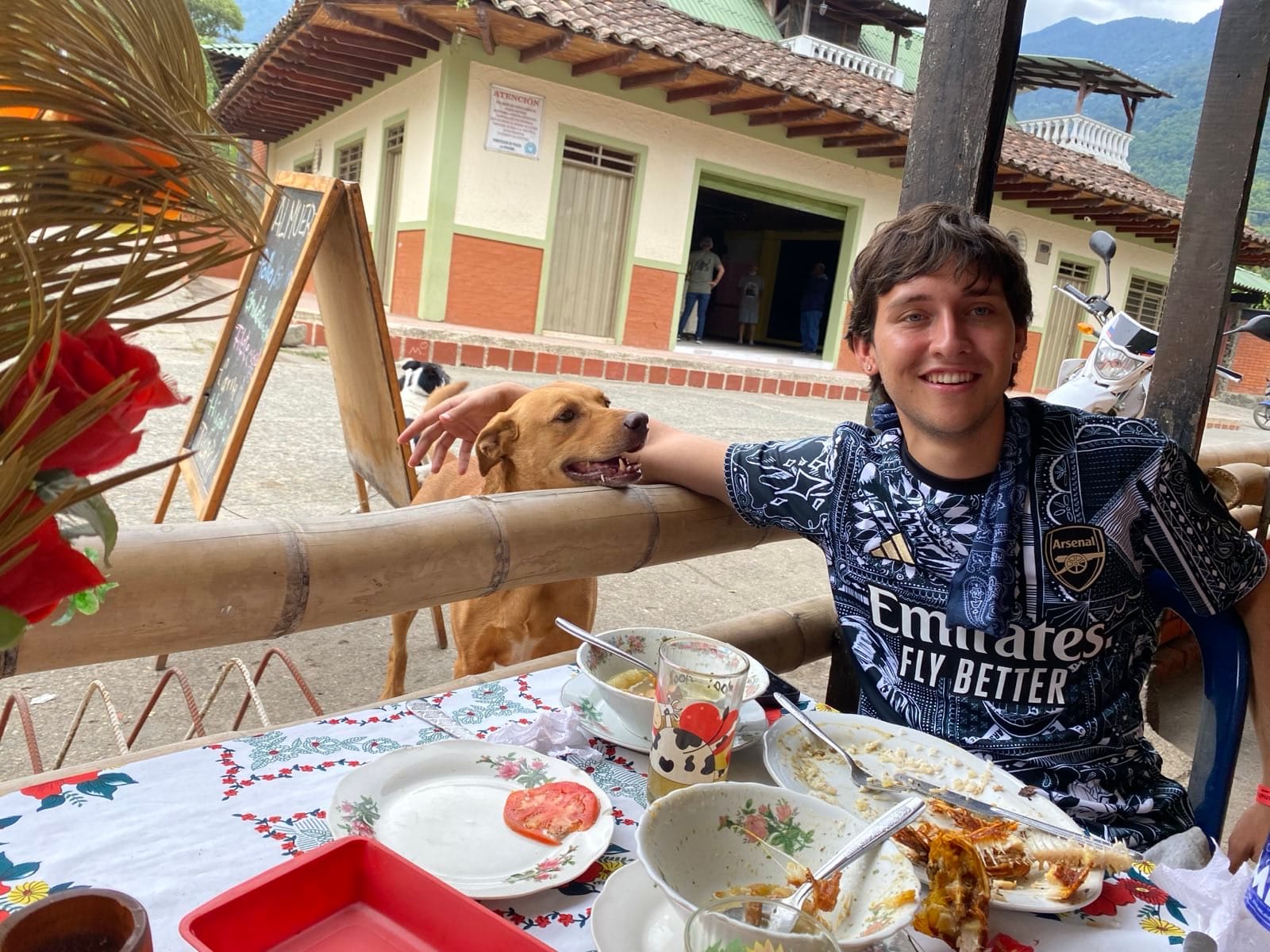
If you enjoyed this piece, please consider donating whatever you can to help keep The 12th running. We can only do more of this with your support.
